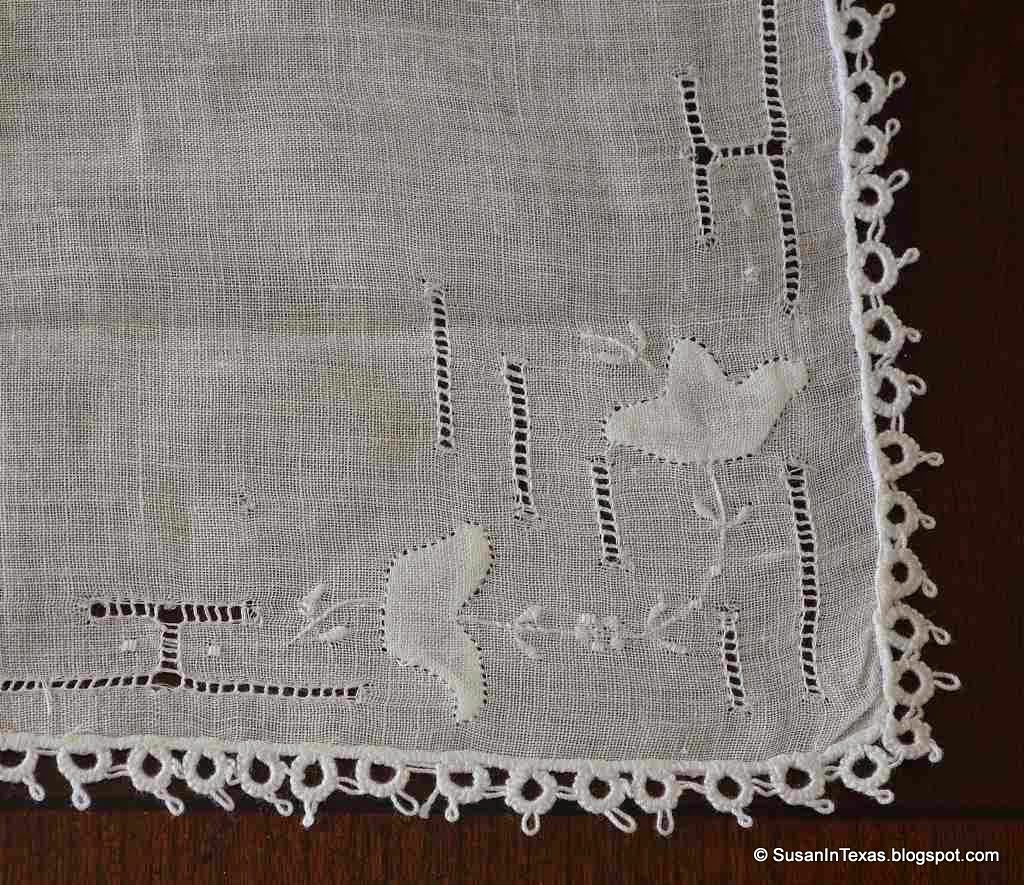So the first "clues" came out, and I joined through one of the holes in the button, and then out a ways. Then I worked back, and joined to the button again. Then out, and back to the button again (at this point I thought it was going to be an octopus).
Next I was instructed to work around the button, and away again, but this time there was a circle of split rings at then end of the arm before working back to the button. One more arm, another circle of split rings, and back to the button and around to finish where you began.
The final result?
This project introduced me to working a button into the tatting, and the technique of split rings. I found the split rings very strange -- tatting "forward" halfway around the ring in the usual fashion, then "backward" halfway around the ring with the other thread in the opposite direction. All those frustrating knots learning to make the knots the right way, and then you're supposed to do it completely wrong again!
Larry
 |
| Tatting Project #4 - Mystery Pattern |
Larry

























































